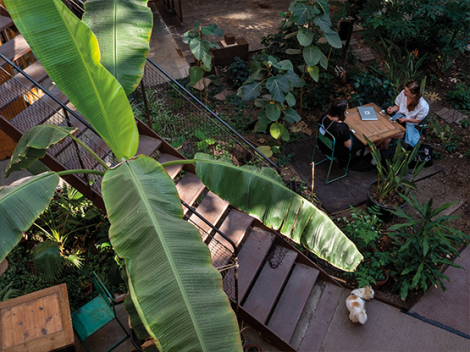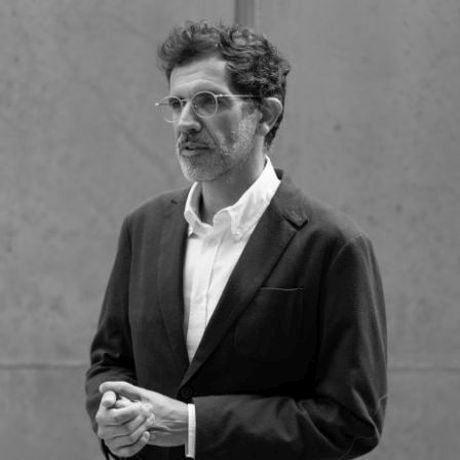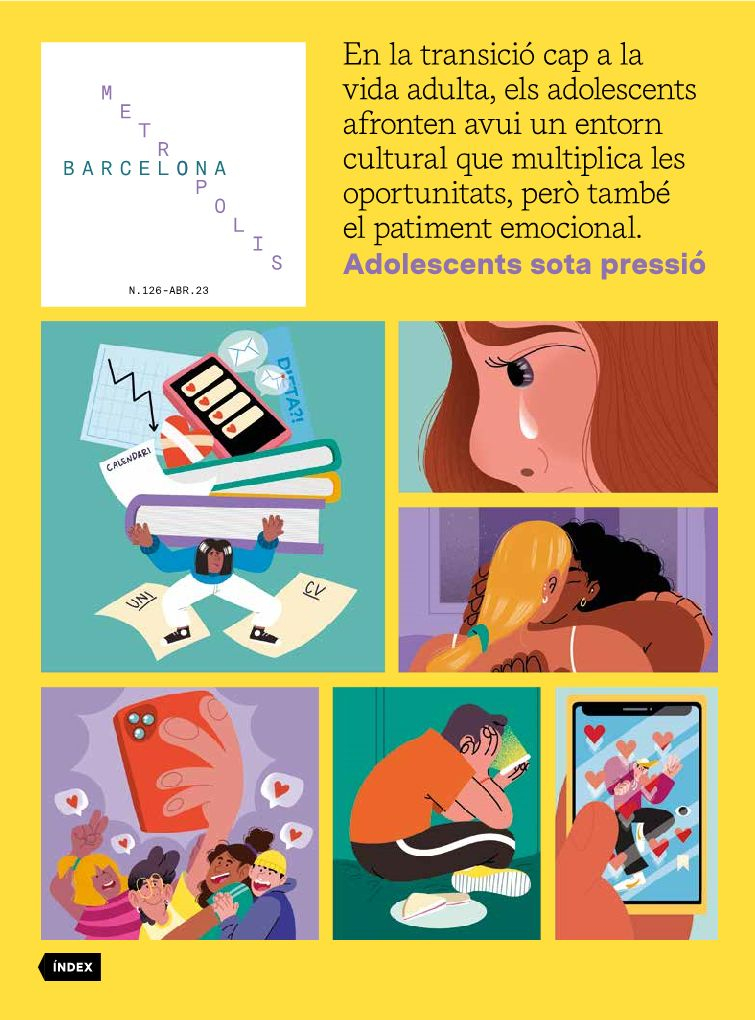Impact of high-skilled migration and digital nomads in Barcelona’s transformation
- Urban visions
- Apr 23
- 8 mins

Major world cities are seeing a sharp rise in highly skilled migrants, in contrast to the previous low-skilled migration. Barcelona is a clear illustration of this trend: the percentage of the foreign-born population with higher education (49.1%) is greater than among the Spanish-born population (48.5%). However, this is often a temporary population, which fuels gentrification.
Migration is a phenomenon inherent to urban development, and has been so in Barcelona since the Industrial Revolution. The migration factor fully accounts for the demographic growth of the Barcelona plan from 1830 to 1930 (from 100,000 inhabitants to one million). The subsequent improvement in living conditions meant that the population balance also contributed to the rise in the city’s population during the second half of the 20th century, although the impact of this factor has weakened to the point of disappearing due to the drop in fertility and the ageing of the population.
The contemporary city cannot be understood without noting the role of migration. Until very recently, urban migration had been characterised, at least in Southern European cities, by the markedly young demographic profile of both sexes, by its predominantly working-class and low-skilled nature, and by including migration plans that sought a degree of settlement in the place of destination. The characteristics of the urban location itself, the housing market and migration networks defined the spatial distribution of the different groups following an initial stage of higher residential instability. In general, they eventually settled in areas far from the city centre (with the exception of old quarters), in areas that were less accessible and less well equipped in terms of services and infrastructures. The scope of immigration, on the other hand, widened as distances became shorter in an increasingly globalised world.
Increase in the qualifications of the migrant population
The beginning of the 21st century has brought some major changes in migration trends in Southern Europe, particularly in Spain, which are reflected in a growing heterogeneity of migrant profiles. The first was the internationalisation of flows at the beginning of the century. Shortly afterwards, we witnessed an increase in the qualifications of migrants, both internal and international, especially those moving towards the big capitals connected to the system of global cities. This trend is a turning point compared to the low-skilled migration that had dominated flows since the Industrial Revolution.
Studies on skilled migration have mainly been addressed from a state perspective, highlighting the positive impacts on economic development in the host countries, the benefits of the circularity of knowledge and the contribution to public revenue expenditure and taxation. On the other side of the coin, regional imbalances have been called into question as a result of the brain drain, which implies the loss of human capital in certain regions of the global south. However, studies on the implications of skilled migration at local level are rather few and far between.
At the beginning of this century, Richard Florida coined and popularised the concept of the creative class, and championed a trend that advocated for attracting talent and skilled human capital to Western cities as a guarantee of success and economic growth. Shortly afterwards, voices emerged warning of the risks on a local scale of specialised highly qualified migrants, as they could exacerbate tensions in the housing market and escalate gentrification processes. Florida himself would end up nuancing his approach recognising a series of socio-spatial fractures in cities, resulting from the concentration of talent and knowledge companies.
It is in central cities where this phenomenon is most evident, and the case of Barcelona clearly illustrates this reality in the context of Southern Europe. The volume of arrivals of university graduates has doubled over the 2010s (from an annual influx of around 17,000 to 35,000). According to the recent 2021 census, some 200,000 foreign-born people with higher education reside in the municipality of Barcelona, approximately half (49.1%) of the foreign-born population over the age of 20. In the previous census, in 2011, they accounted for 38.2%, and in 2001, 28.4%. For the first time, the percentage of the foreign-born population with higher education is greater (49.1%) than among the Spanish-born population (48.5%).
 Temporary residents often live in neighbourhoods with a high level of tourist activity. © Dani Codina
Temporary residents often live in neighbourhoods with a high level of tourist activity. © Dani CodinaIn addition to the increase in the qualifications of the foreign-born population, it is worth noting their high spatial concentration. For example, university-educated migrants who arrived in Barcelona during the 2010s were registered in the Gòtic neighbourhood four times more than they would have been if they had been randomly located, based on the distribution of Barcelona’s population. In Sant Pere, Santa Caterina and La Ribera, it was 3 times higher; in Barceloneta, 2.7 times higher; and in L’Eixample Dreta, 1.9 times higher. The high spatial concentration of the highly qualified foreign-born population, mainly from high-income countries that relocate to cities in lower-income countries, as well as its effects on the processes of urban and socio-demographic transformation, constitutes an emerging object of study in academic research that has been conceptualised under the label of transnational gentrification. One of the characteristics of this type of place is the strong presence of a young adult population, an age group in which the population born in the area itself is shrinking. In the Catalan capital, the percentage of the population aged between 25 and 49 born in the province of Barcelona is 15.1% in the Gòtic neighbourhood, and 19% in Sant Pere, Santa Caterina and La Ribera.
Population turnover and seasonality
The migration decisions of the highly skilled population are strongly influenced by the destination’s characteristics, and value is placed on the well-being and quality of life offered by the surroundings. The pursuit of a new life may take the form of a move to another country: this is what the literature refers to as lifestyle migration. One of the increasingly distinctive characteristics of international skilled migration is its strong transience, an aspect that is also a new development when looking at migration to Southern Europe from a historical perspective. Among the growing heterogeneity of highly temporary migration profiles, we find a number of examples of hypermobility, such as exchange students or so-called digital nomads, whose professional activity is not tied to a specific place. These groups have emerged in the context of two global trends: mobility and digitalisation. As in other areas of Southern Europe, Spanish cities are attracting a growing number of wealthy floating populations, which drives transnational gentrification processes in specific areas, most often in old quarters.
The Barcelona Sociodemographic Survey sheds some light on this phenomenon. To begin with, the foreign-born population with higher education is by far the least registered in the Spanish census system (in 2017, 6% were not). The findings also illustrate the spatial concentration of temporary populations and the high level of residential turnover in these areas. In Ciutat Vella, 36.1% of residents in 2020 had accessed housing in the previous two years (46.2% in the previous five years), compared to 22.7% in the rest of the city (31.5% in the last five years). If only the foreign-born adult population with university studies is considered in Ciutat Vella, 57% moved to the neighbourhood over the last two years.
 The Nest City Lab in the Poblenou neighbourhood features workspaces in a sustainable environment. © Dani Codina
The Nest City Lab in the Poblenou neighbourhood features workspaces in a sustainable environment. © Dani CodinaThe concentration of certain tourist infrastructures and services also attracts short-term residents, who adopt urban practices that are not all that different from those of tourists and, therefore, have a similar capacity to contribute to urban change. Examples include the use of temporary accommodation as a place of residence, the leisure and restaurant amenities they consume, or the proliferation of hotels that are adding co-working spaces to their facilities.
According to various studies, places with a strong presence of temporary populations not only see gentrification processes intensify at neighbourhood level, with dynamics involving the displacement of vulnerable populations and socio-demographic replacement, poorer access to housing, exclusion in the public space and commercial changes, but this dynamic is also contributing to broader processes of polarisation and socio-spatial segregation, driving the different social groups living in the metropolis apart. Moreover, this high population turnover also undermines the sense of belonging and relations between neighbours, and severely affects community networks and associations.
It is still too early to gauge the impact of the pandemic on international migration. Figures for 2021 already point to the significant recovery of flows after a 2020 affected by the global decline in mobility. Hypotheses suggest that the hyper-mobility of the skilled population already observed before the pandemic will be heightened as a result of increased labour flexibility and the expansion of teleworking. Although difficult to quantify using traditional sources of information, much is being said about the influx of digital nomads and the battle between states and cities to attract them. Against this backdrop, debates over contributions in the form of taxes are emerging. On the one hand, many states offer tax breaks under talent attraction policies. On the other hand, the extent to which floating populations, often with jobs in other countries, contribute to public finances in the form of taxes is unclear. In territorial terms, the arrival of skilled migrants in city centres in the post-pandemic context is likely to coincide with the growing attractiveness of suburban spaces for local middle classes after the pandemic, which would exacerbate the processes of population segregation in the territory.
Cities are at the forefront of a growing diversity and complexity in the relationship between migratory movements, jobs and residence in an increasingly global and hyper-mobile context. In this scenario, the cities of Southern Europe in general, and Barcelona in particular, are becoming very attractive places both for well-off migrants and for capital, attracted by the capital gains generated by these processes in a markedly neoliberal context. To properly understand and manage cities that are changing so rapidly, we must not lose sight of the implications of these dynamics for the transformation of neighbourhoods and the resident population’s living conditions.
The newsletter
Subscribe to our newsletter to keep up to date with Barcelona Metròpolis' new developments




